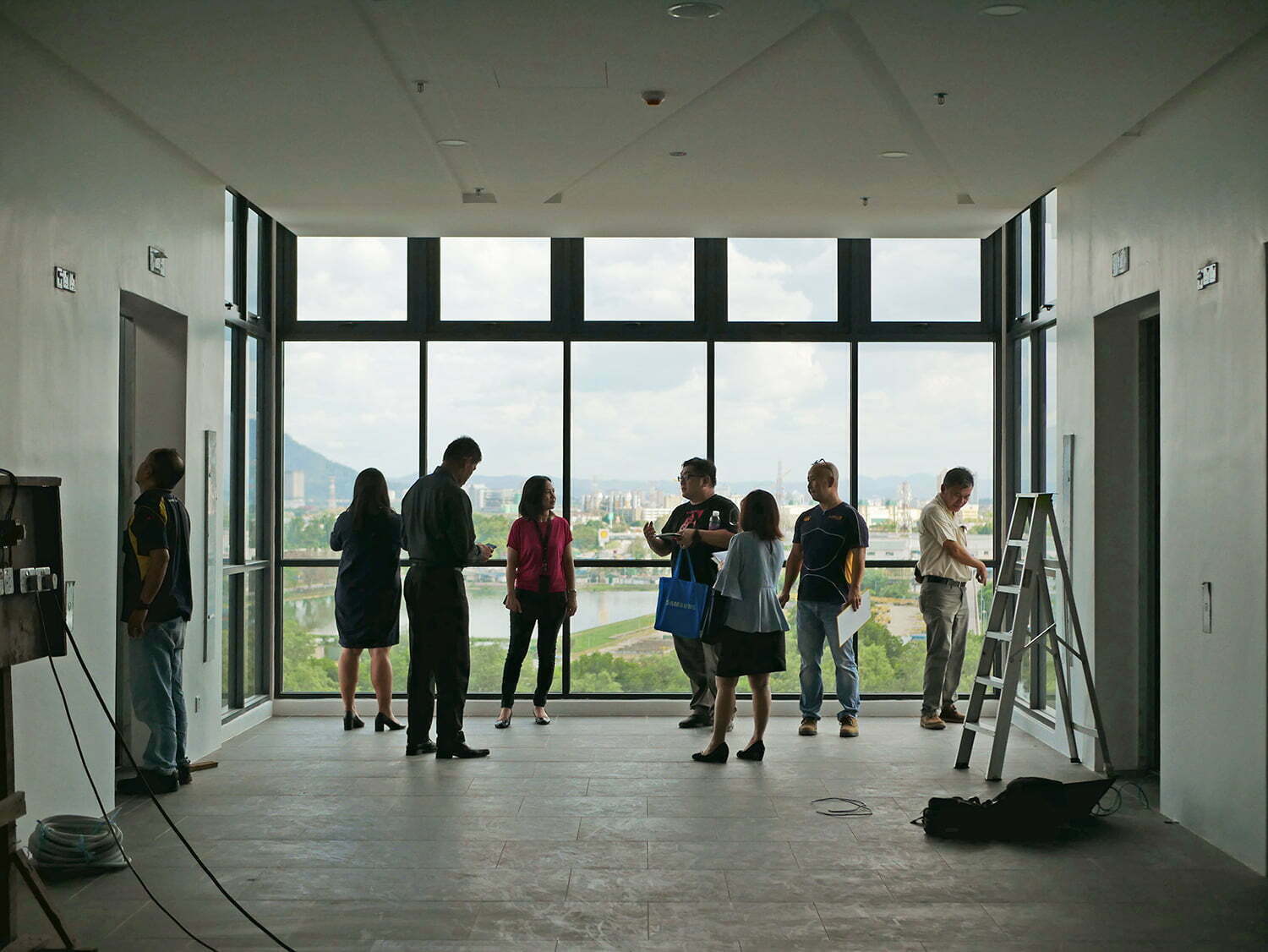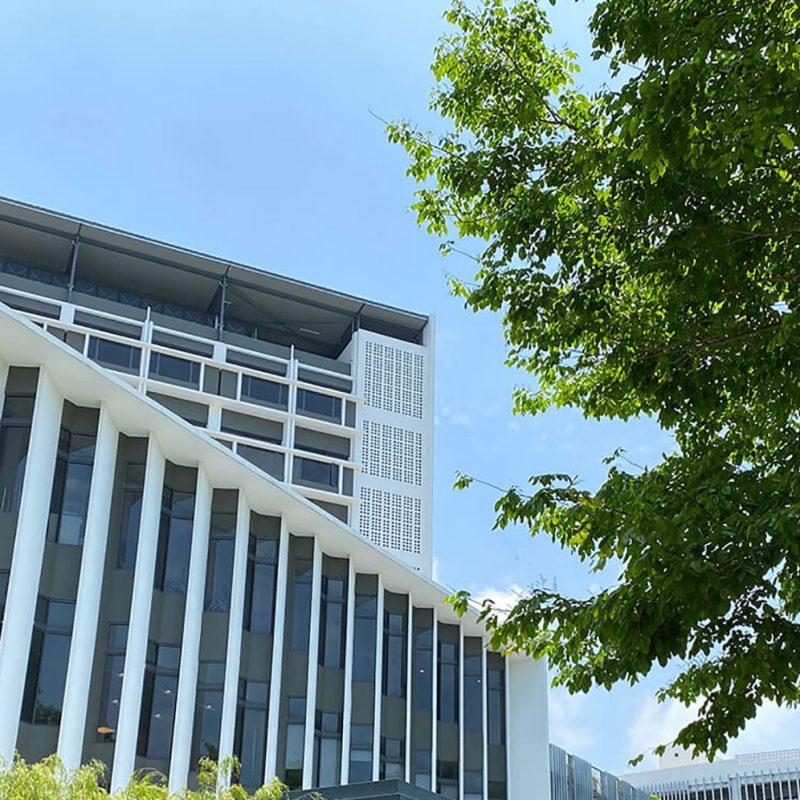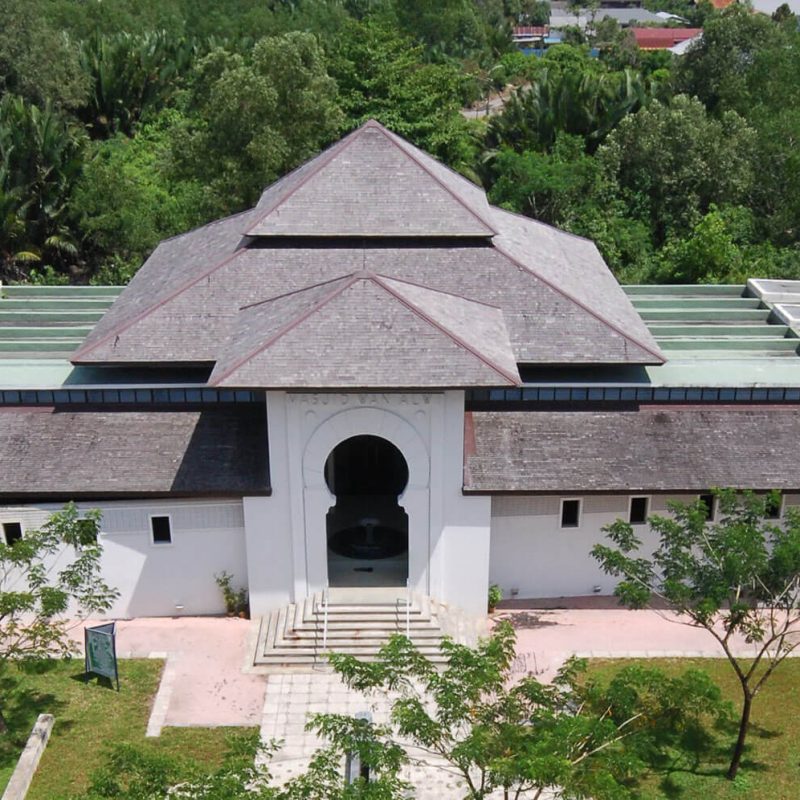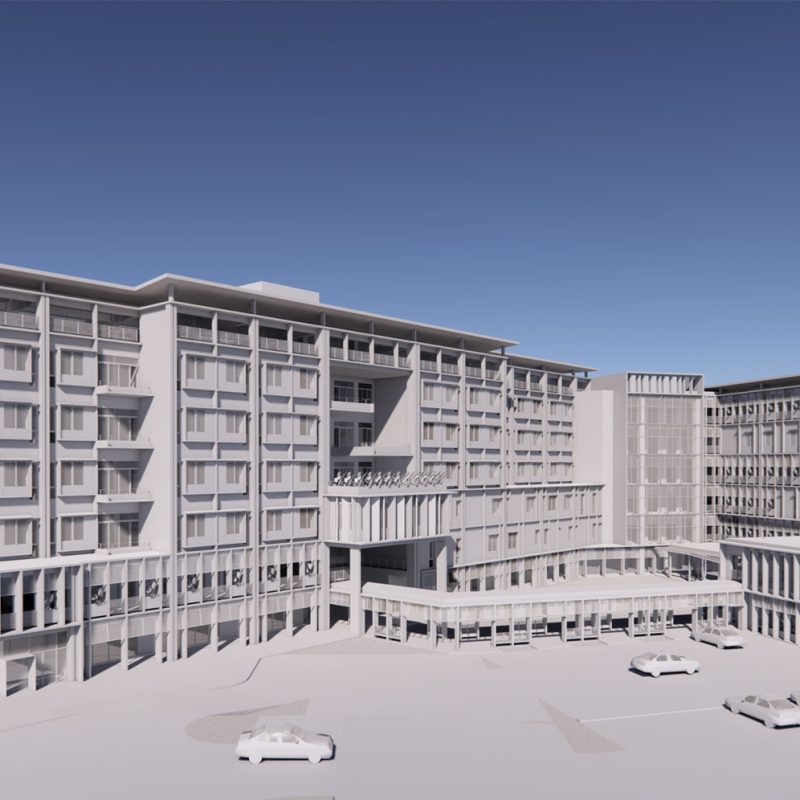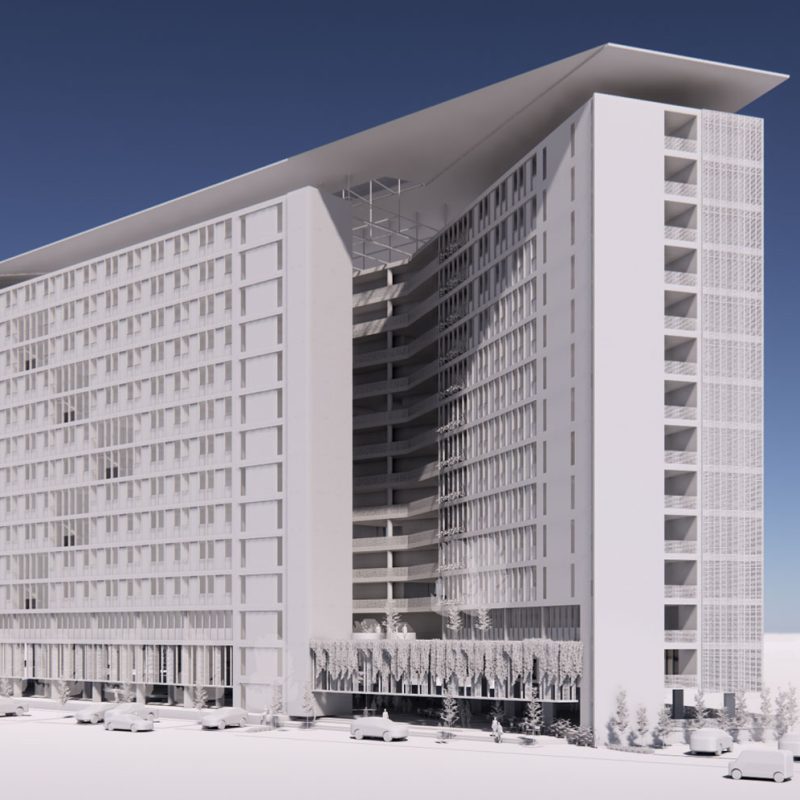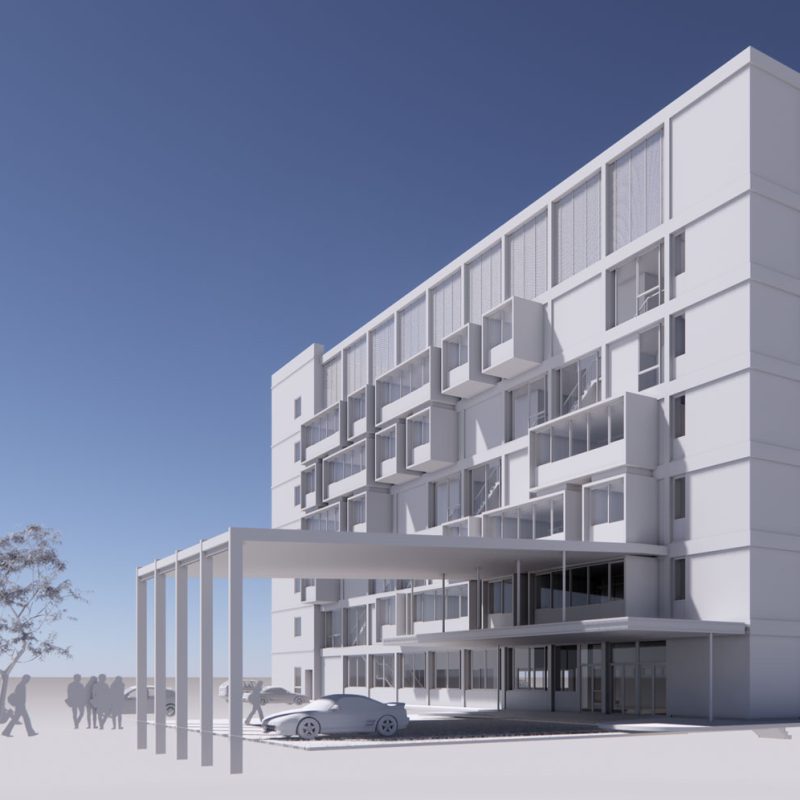Location
- Malaysia
City
- Butterworth | Penang
Duration
- 2015 – 2020
Client
- Bagan Specialist Centre
Surface
- Site area
- : 4 acres
- Building area
- : 19094.73 m2
- Building height
- : 9 storeys
Status
- Completed
Project Type
- Public and Civic Buildings
Themes
- Health | Hospital

Built in the 1980s, the Bagan Specialist Centre along Jalan Bagan 8 in Butterworth, Penang, is ready to grow and better serve its clients. The original hospital building was constructed at the widest perpendicular corner of a triangular site, overlooking a large field. Its recent expansion, completed in 2020, more than doubles its bed capacity from 150 to 350 beds and includes a new Cancer Care Centre with a radiotherapy bunker, and a Chemotherapy department. In addition, the uppermost floor of the former ward rooms in the existing hospital are converted into new offices for the hospital’s staff and management.
The existing hospital is still the cornerstone of the site. Opposite it, directly facing the Perai River, is the ward block, an 8-storey building with eggcrate sun-shading to protect against glare. Service spaces are plugged into leftover spaces: a carpark block occupies the narrowest corner of the site, while an M&E block fills the gap between the new and old wards.
The arrangement of the building programmes also coincides with the phases of the new expansion, given that the existing hospital continued operating throughout the construction process. The M&E block was completed first in order to take over support services from the existing M&E plant. After building the carpark came the clinics, operating theatres, and then the ward block, allowing existing facilities to be transferred over from the original building, which was finally upgraded into a wing for new A&E, Dialysis and Imaging Departments.
With all the blocks ringing the site, a central courtyard is formed in the negative space between them, offering the wards, clinics and training rooms direct views of softscape and the Perai River. A significant portion of the ground floor is naturally ventilated.
The landscaped courtyard may be the crown jewel of the complex, but greenery is a constant presence in and on the new hospital building. There are trees in the courtyard; leafy plants in planter boxes along the corridors, and creepers on the carpark block facade. The emphasis on landscaping is a welcoming change from the often no-frills and efficient architecture of hospitals, helping the Bagan Specialist Centre to present a friendlier front to the community.
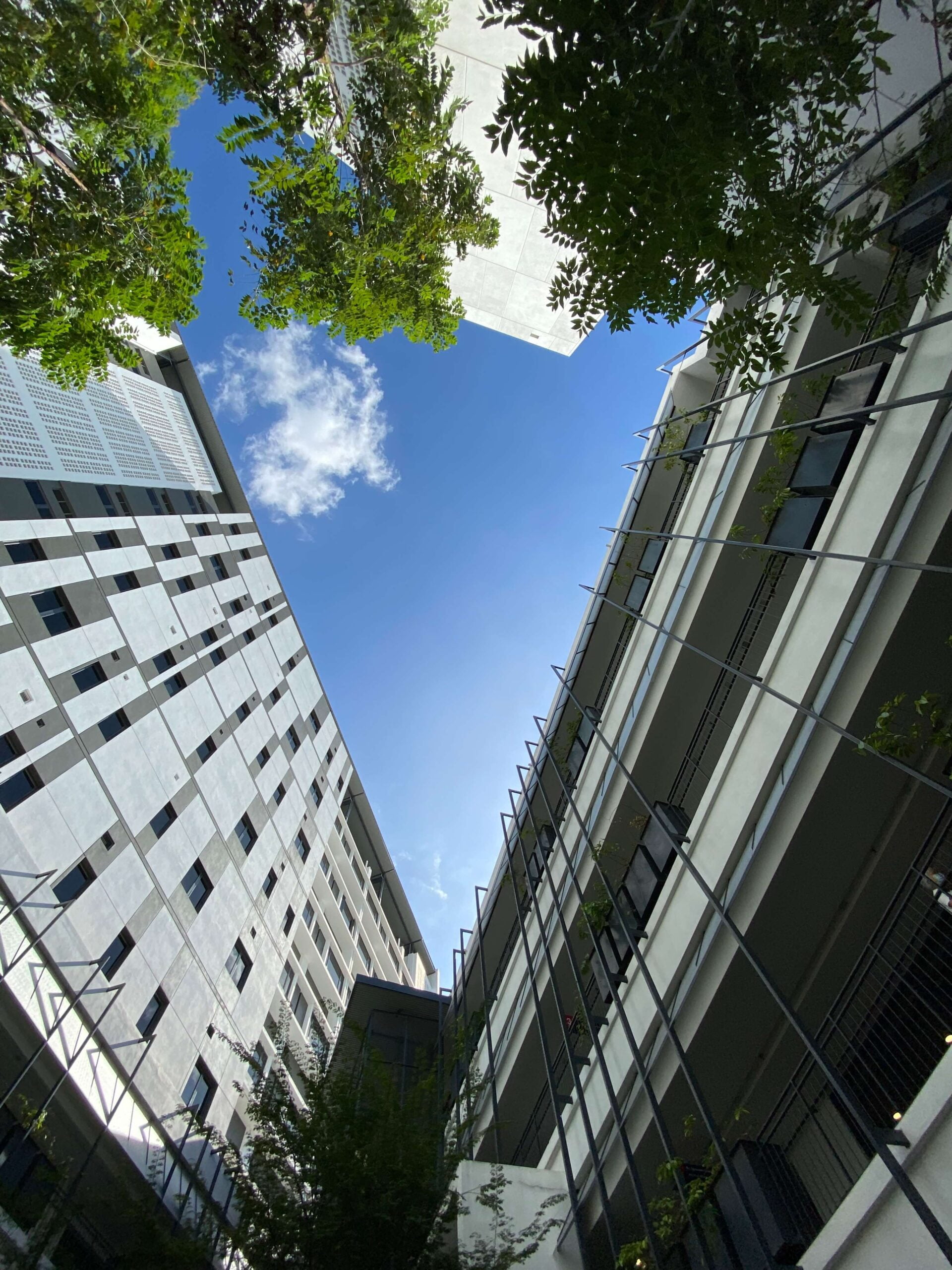
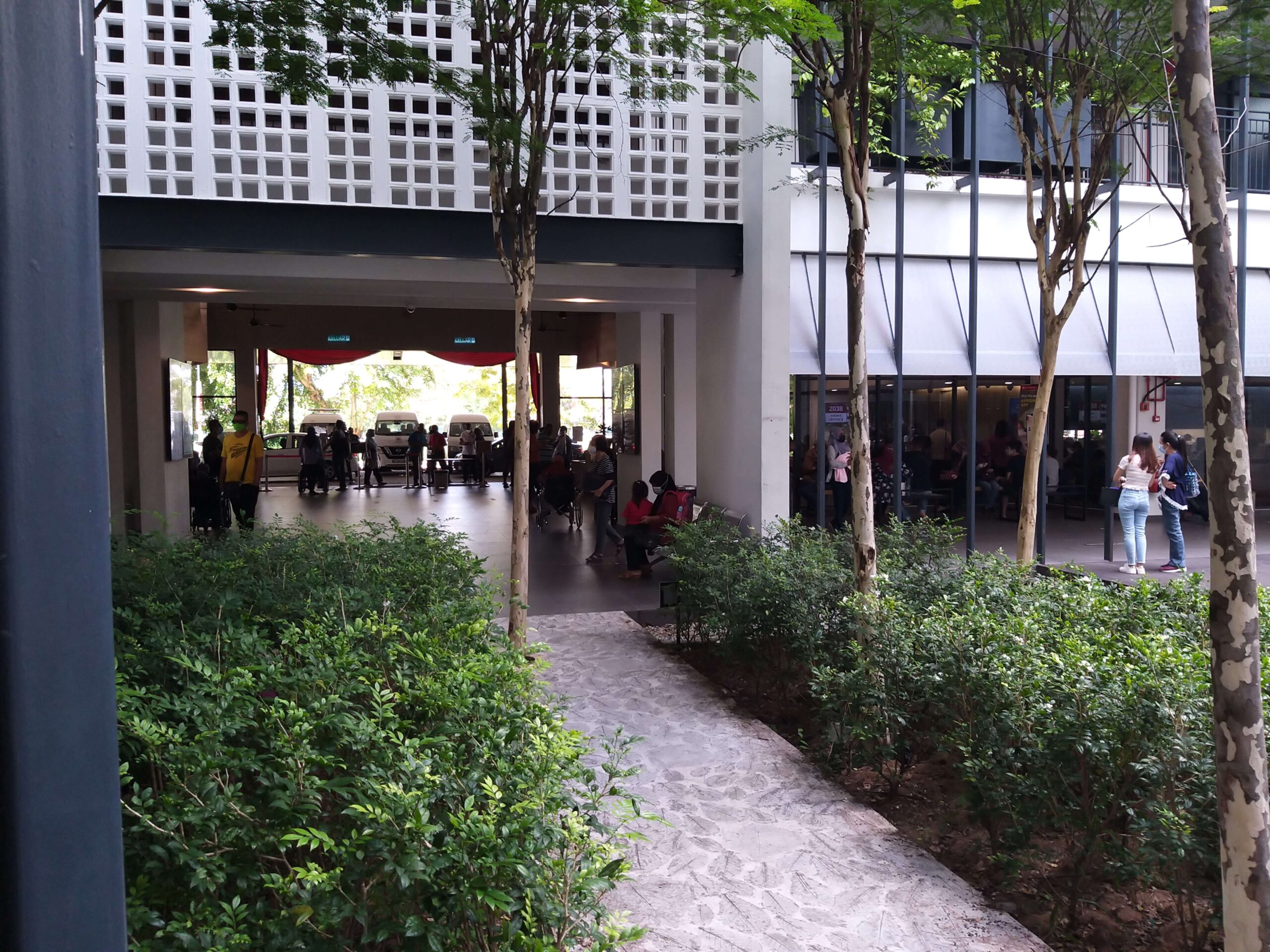
The architectural scheme is a balance between complying with medical flow and requirements, and tectonic expression and climatic response. Connection between the Ward, Clinical and Operating Theatre (OT) blocks is by shaded corridors along the central courtyard; they are shaded with awnings and garnished with planters and views of the trees. Ward blocks typically have ‘thick’ floor plans, resulting in squat proportions – we mitigated this by breaking down the façade into sun-shading fins and ledges, while service areas are represented in vertical strip windows to elongate the overall massing. This architectural treatment resulted in bay-windows in some of the ward rooms, which serves as a day-bed for the patients’ carer. The roof of the Ward block is capped with a light steel roof to harvest rainwater for the ward toilets and provide heat and weather protection.
The Front Clinical block is the ‘face’ of the hospital with its naturally ventilated main lobby and seminar rooms on the upper floors. It has views of the ‘tapak lapangan’ (field site), but unfortunately, it faces west. To address this, we slanted the west walls and inserted the windows in between them. This design allows natural light to diffuse into the clinics and waiting areas, further enhanced by flowering creepers on the building’s façade.
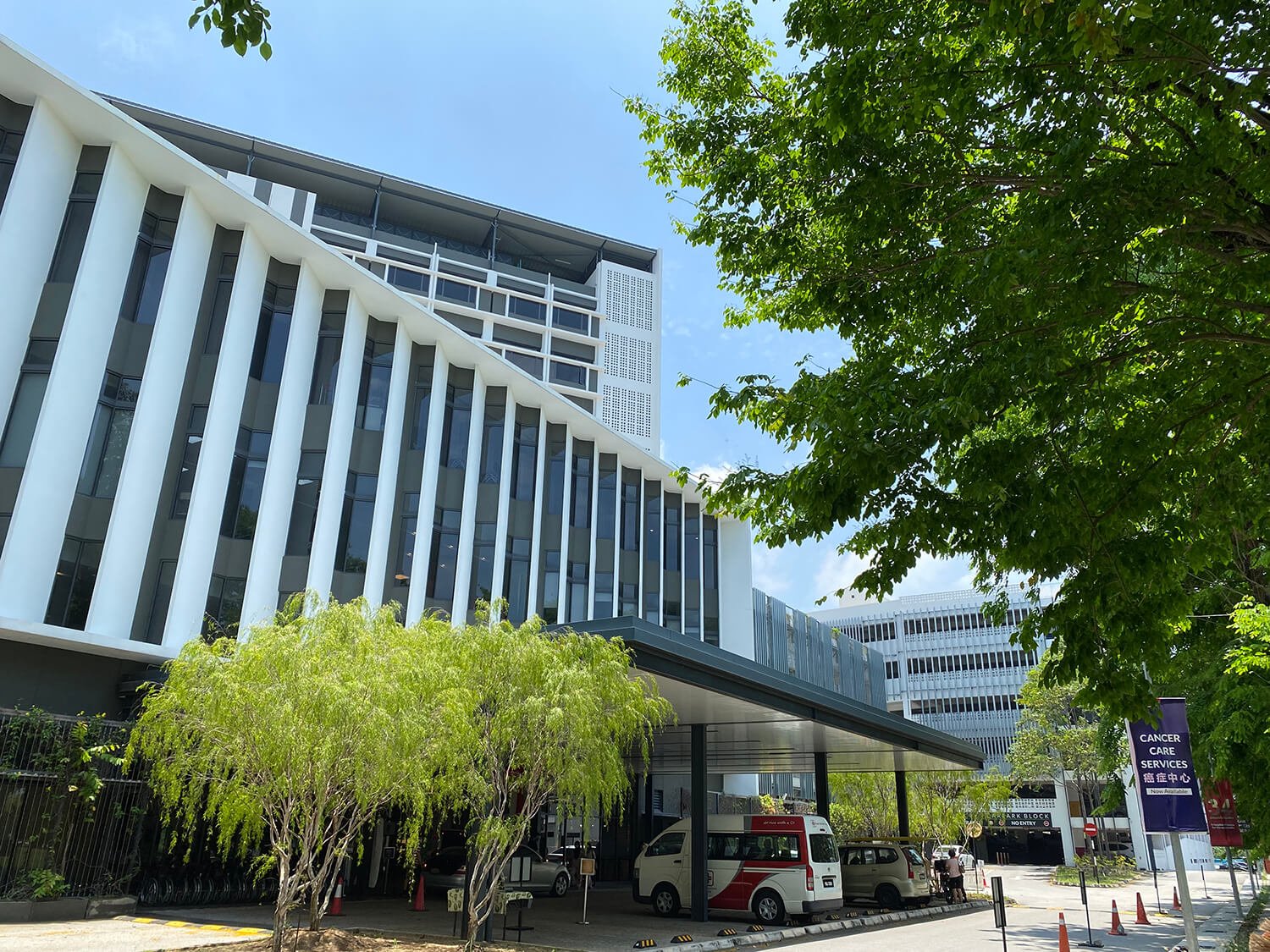
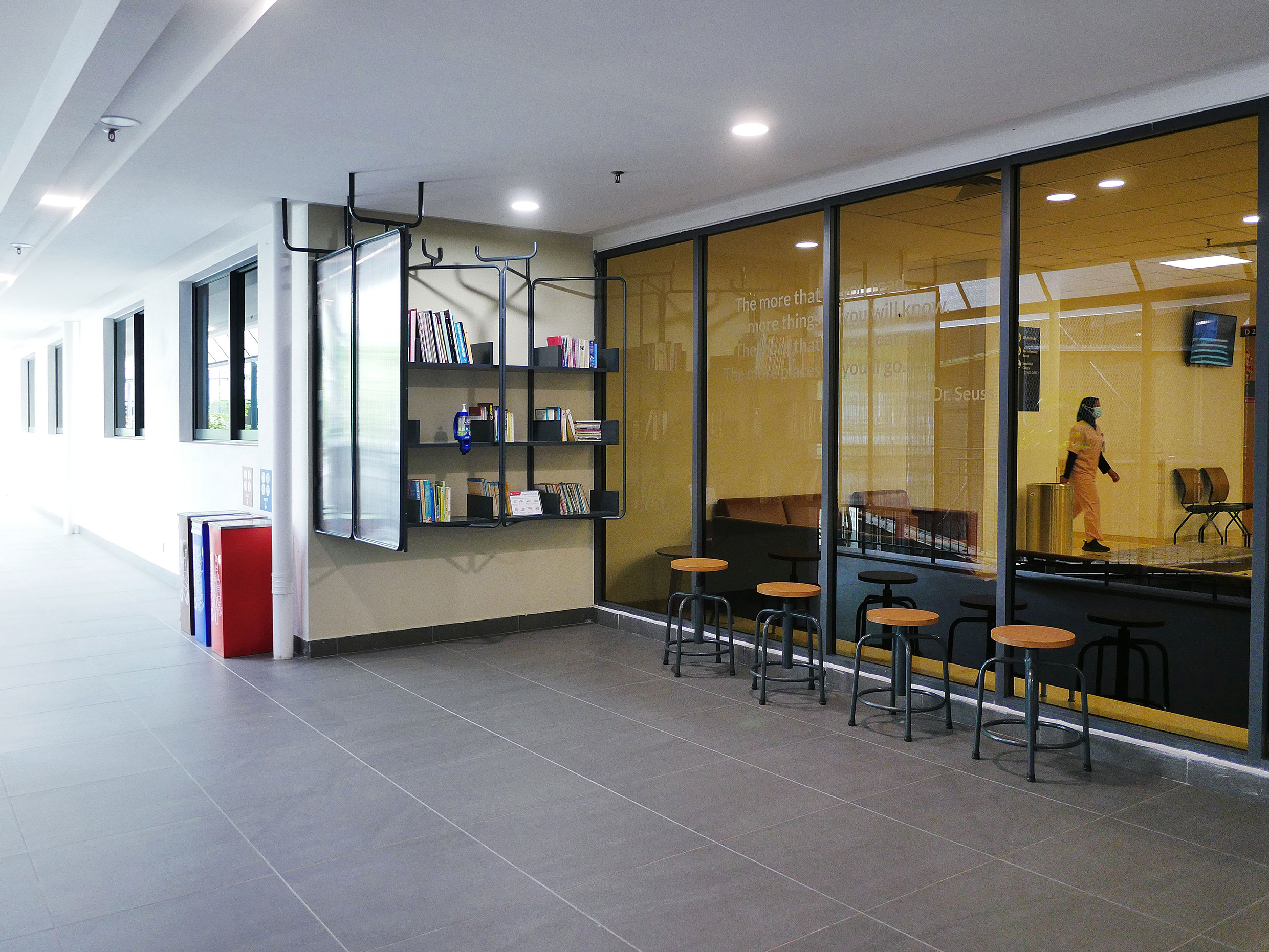
The OT block is tucked in between the M&E block and the existing hospital building from which the former departments were decanted. The connections are crafted to introduce public spaces such as Physiotherapy terrace (between OT and existing blocks), the Mini Library (between the Ward and Front blocks) and the Breastfeeding Room (between the Front and existing blocks). Many of these public spaces take the opportunity to explore design possibilities, such as upcycling hospital equipment into library shelves and seating.
As a whole, sufficiency is a key theme in the design of the hospital. The hospital complex utilises very few building materials; concrete, steel, aluminium and glass, most of which are sourced locally. It also practices passive design whenever it is possible – lift lobbies are naturally ventilated and lit, patient and staff circulations are supported by outdoor corridors and stairs, ceiling heights are maintained at 3.2 m to promote air circulation. Landscaping is introduced into the common areas to cool and filter air. Additionally, there are plans to enhance the existing ‘tapak lapangan’ by transforming it into a green forecourt for the hospital, as well as an exercise area for the neighbourhood.
The new Bagan Specialist Centre has been operational since early 2020; and the existing block has since been transformed to house Dialysis, Rehab, Endoscopy and A&E departments.
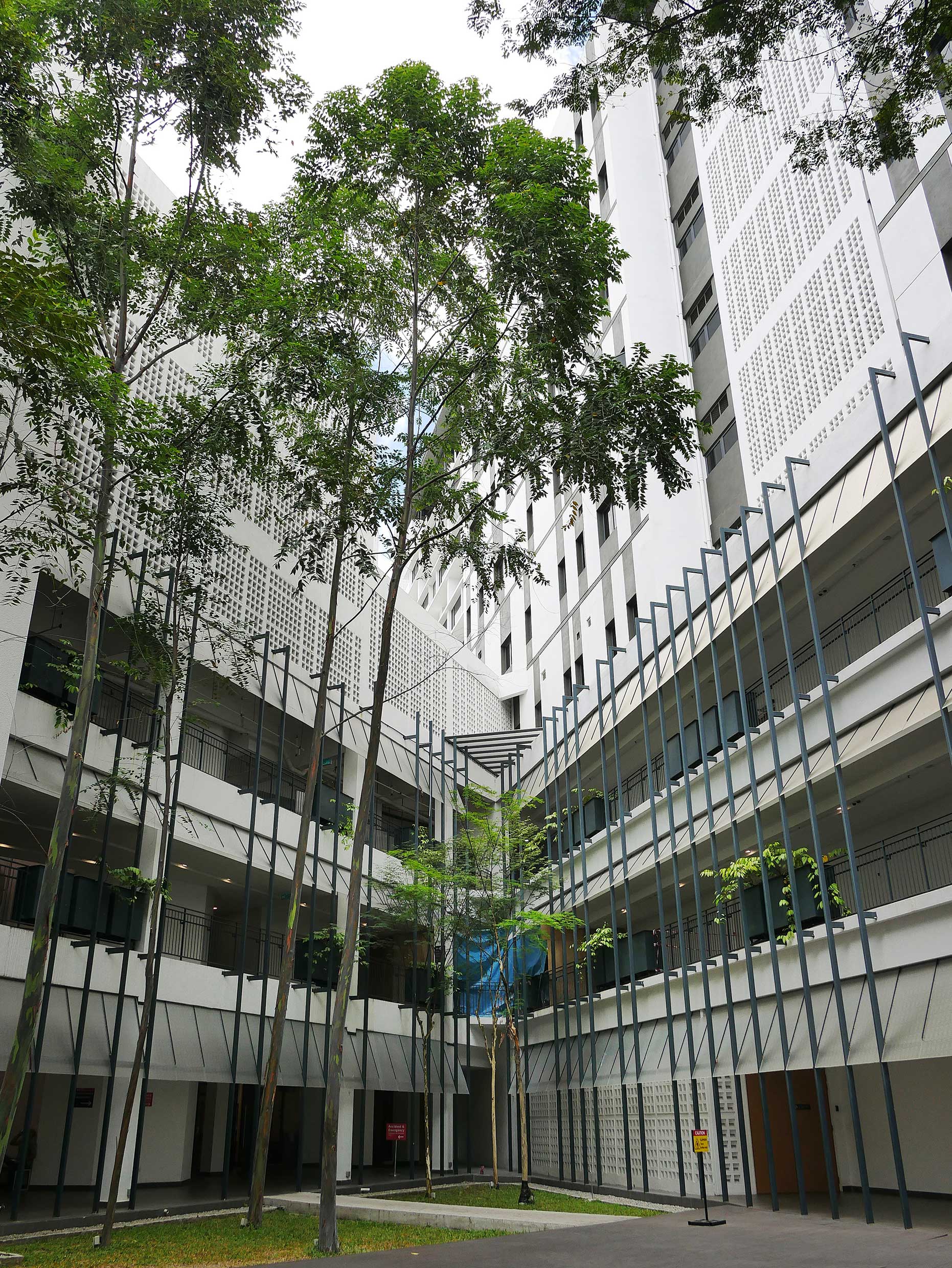
Team Credits
Architect
- MinWee Architect
Medical Planner
- THChiam Architect & Health Facility Planner
Engineer
- C & S : GTP Consultants Sdn Bhd
- M & E : TES Avenue Sdn Bhd
Quantity Surveyor
- Kuantibina Sdn Bhd
Landscaping
- Perunding Hijaureka Sdn Bhd
- MinWee Architect
Contractor
- Shiangly Builder Sdn Bhd
Design Team
- Wee Hii Min
- Leong Gian Wen
- Lee Peng Hui
- Chiam Tat Hong
- Fiona Law
- Claudia Law
- George Lee
- Vivian Kuan
- Ileana Quiroz
- Yvonne Chong
Photography
- Sean Wee
- Lionel Kueh
- CK Tan
Publications
Share our project
